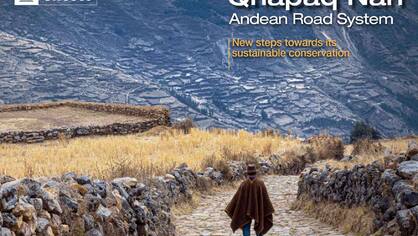Heritage and Sustainable Development
Sustainable Development is a concept, an approach, an aspiration, and an urgent need. The UN 2030 Agenda for Sustainable Development, the African Union Agenda 2063, and the UN New Urban Agenda are among several major international agreements towards sustainable development. The World Heritage Sustainable Development Policy (2015), adopted by the World Heritage Committee, provides concepts and principles linking conservation of the Outstanding Universal Value of World Heritage properties with sustainable development.
Canopy provides a thematic and regional resource for better understanding:
- The role and contribution of heritage to sustainable development in and around the World Heritage properties that benefit local communities;
- Operational solutions for sustainable development in and around World Heritage properties that integrate heritage conservation objectives also to protect their Outstanding Universal Value;
- Examples of heritage management practices, policies, and actions that contribute to sustainable development transversally across different thematic dimensions and sustainable development solutions that engage with heritage.
Case studies
Search and Filter

Published in 2021, a new edition of the 1999 reference publication “Asante Traditional Buildings” updates and expands this important record of their outstanding architecture, making it once again available ...
Explore World Heritage Canopy
Discover the six themes.
Call for contribution
Canopy is a growing database built thanks to contributions from the World Heritage community and beyond. We are currently collecting case studies of management practices, events, and activities related to World Heritage and historic cities. The collection aims at inspiring solutions and sharing innovative practices related to sustainable development across historic cities around the world. Selected case studies will be disseminated through our different channels such as our e-newsletter, online workshops, and webpages related to the UNESCO World Heritage Centre.
For this, we invite you to fill in this form in English, French or Spanish, and send it to worldheritagecities@unesco.org with the subject line “[Name of city, country] World Heritage Canopy”. If your submission includes multimedia content, we invite you to consult the Guidelines for media submissions.
We look forward to receiving your contributions and learning more about your recent efforts for the protection of World Heritage and historic cities.
Further Resources
Acknowledgement
We grateful acknowledge the support of the city of Nanjing.
Note: The cases shared in this platform address heritage protection practices in World Heritage sites and beyond. Items being showcased in this website do not entail any type of recognition or inclusion in the World Heritage list or any of its thematic programmes. The practices shared are not assessed in any way by the World Heritage Centre or presented here as model practices nor do they represent complete solutions to heritage management problems. The views expressed by experts and site managers are their own and do not necessarily reflect the views of the World Heritage Centre. The practices and views shared here are included as a way to provide insights and expand the dialogue on heritage conservation with a view to further urban heritage management practice in general





































































































































